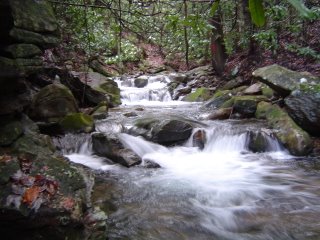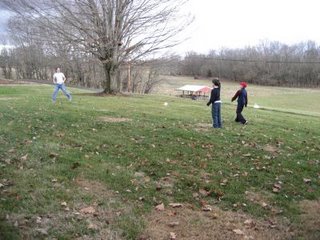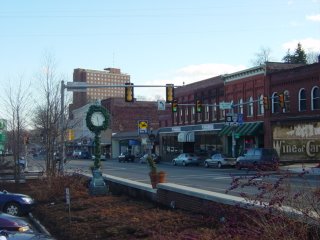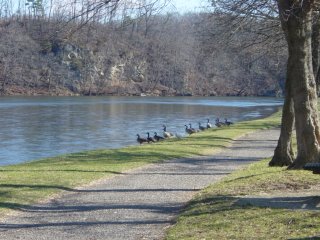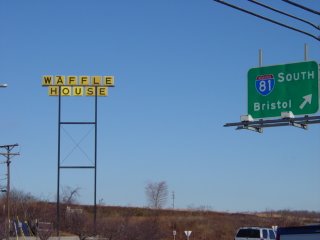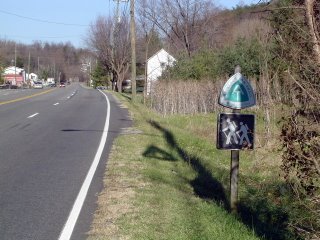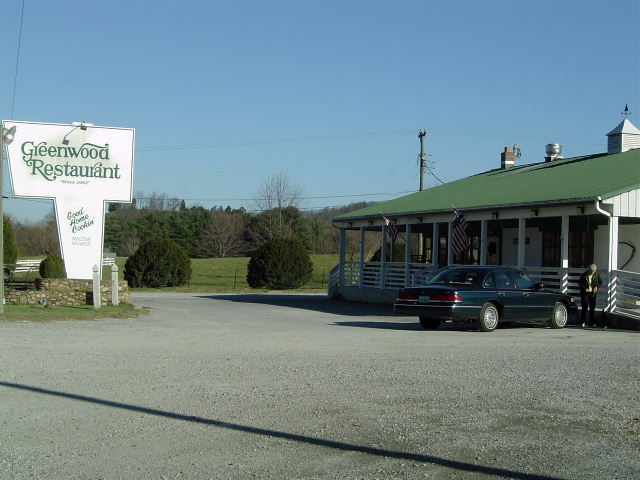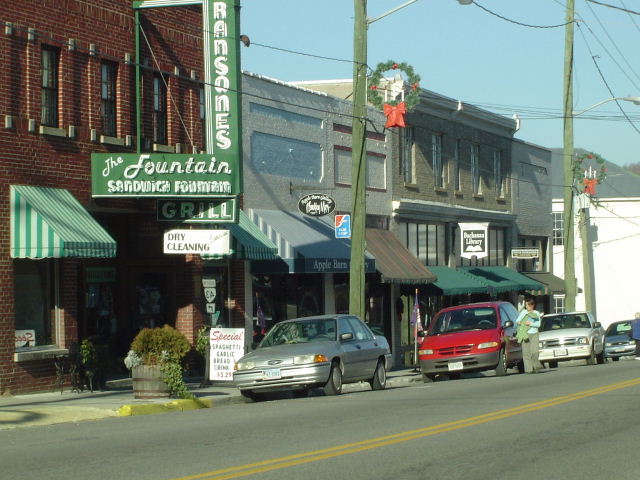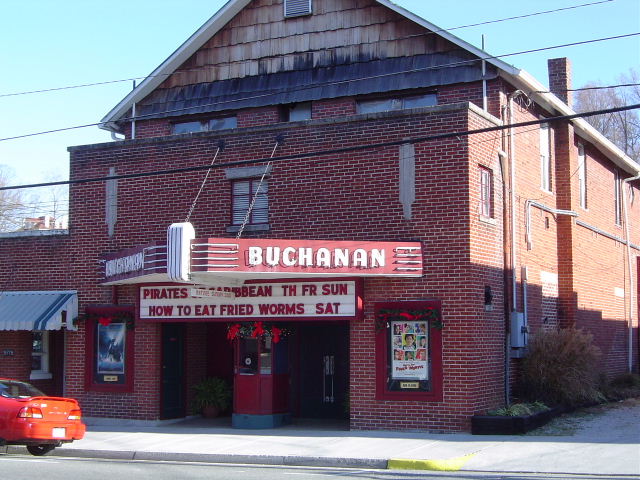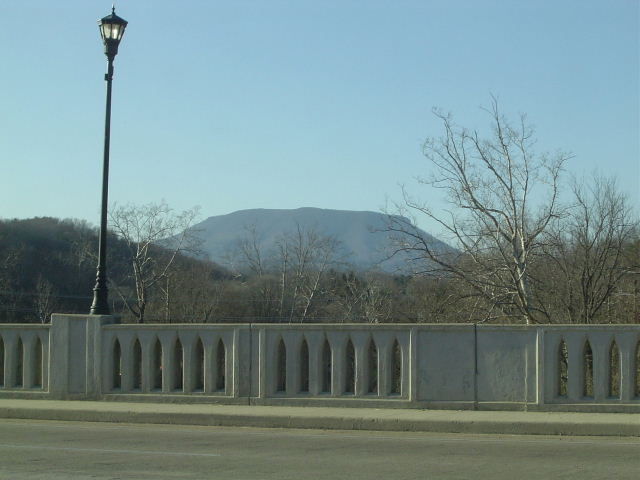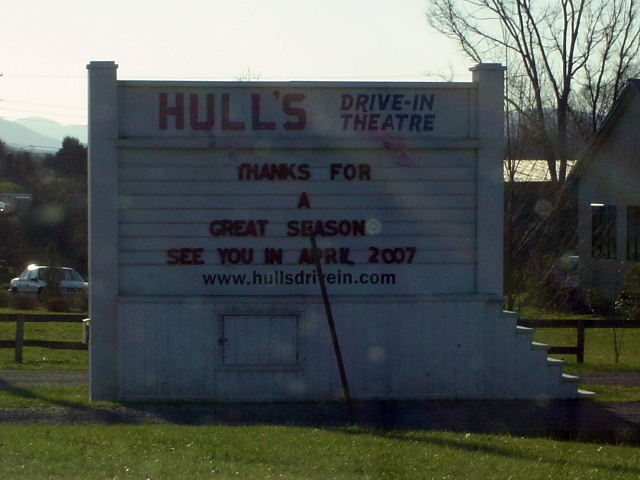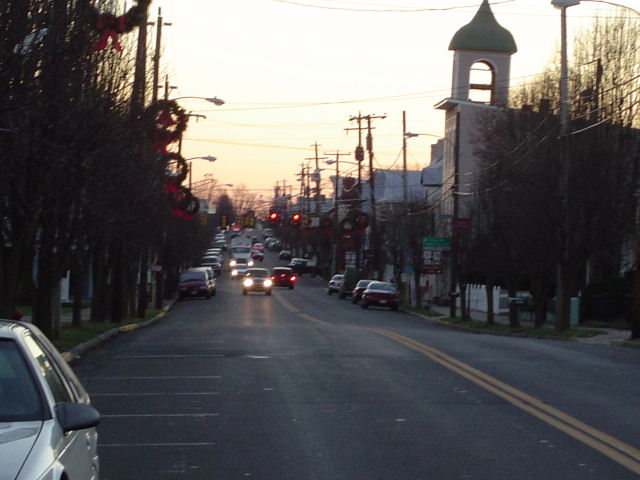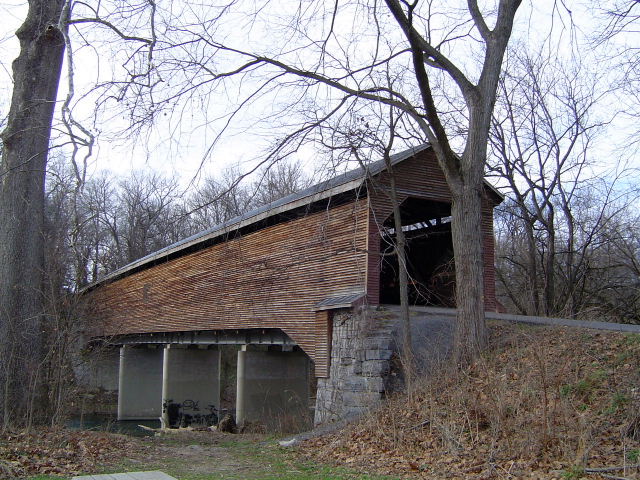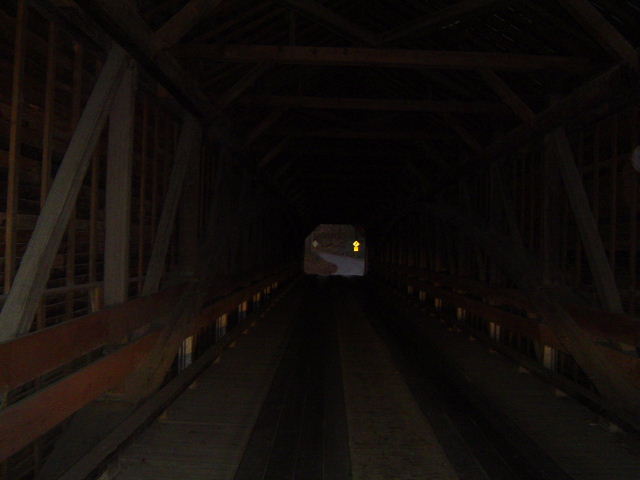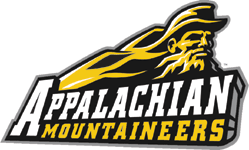
Colonel Harland Sanders, Chickenlord of Kentucky
(Image from Alice J. Schleicher, Inc., a Kentucky Fried Chicken Franchise Holder in Indiana, Kentucky, Tennessee, & Alabama)
We start in France.
was a French Huguenot and a scientist in the late 17th and early 18th Centuries. Before he disappeared in Britain sometime after 1712 (not to spread rumors, but he was destitute, an refugee from the French monarchy, and a political enemy of Sir Issac Newton [who, of course, died from mercury poisoning, a product of his obsession with undermining counterfeiters and alchemy]), he was deeply involved in research on the use of steam driven mechanics, specifically for the purpose of powering engines. A side effect of Mr. Papin's research was a device he called a steam digester - a unique machine that increased, within a given space, atmospheric pressure to such a degree that some of the physical properties of matter within said atmosphere changed. The practical upshot of this was that organic matter placed into such a high-pressure device cooked far more rapidly than it ordinarily would, often three to five times as fast.
Today we call these apparatuses
pressure cookers, and they form the basis of two of Appalachia's most famous exports - one legal, one illegal. As to the latter, well, its called liquor. Whiskey to be specific and moonshine whiskey. As to the former? Well, read on.
A century after the good Mr. Papin mysteriously vanished from public record in Britain, the British Empire would find itself deep amidst a major war against a federation of thirteen of its former colonies (and several of their own colonies) - the United States of America. While the war had many causes, all of which are debatable, the war itself was seen by both combatants as an opportunity to grab invaluable territory. The US hoped it would be able to invade and capture Canada, effectively doubling its territory, whereas the British hoped to capture the Northwestern Territories, now the American Midwest, at the least, and possibly other territories contemporaneously under American control.
To state the outcome simply, Canada remained British, and the Midwest remained American, and the power of native American tribes in the Midwest and Southeast that had supported the British was effectively minimized to the point that their negotiating abilities with the Union were virtually nil.
While many of the state militias had performed ineffectively during the War of 1812, those on the frontiers, notably those of the Indiana territories and the Commonwealth of Kentucky, were considered to be surprisingly effectively.
Time for a quote from the
Honorable Order of Kentucky Colonels:
The title Kentucky Colonel has been around since 1813. The Kentucky Militia had just returned from a highly successful "War of 1812" campaign that resulted in control of the Northwest being returned to the United States. When the militia disbanded, Governor Isaac Shelby commissioned Charles S. Todd, one of his officers in the campaign, as an AID-DE-CAMP on the Governor's Staff with the rank and grade of Colonel. Todd married Shelby's youngest daughter two years later.
Early Colonels actually served military roles. In the latter part of the 1800's, the position took on a more ceremonial function. Colonels in uniform attended functions at the Governor's mansion and stood as symbolic guards at state events. By the late 1800's, the title had become more of an honorary one. In the late 1920's, a group of Colonels started talking about forming a "society". Governor Flem Sampson gave his blessings to the project. Late one Saturday afternoon in May of 1931, the first meeting of what would eventually become the Honorable Order of Kentucky Colonels was held in Frankfort.
"Formulate a society to more closely band together this group into a great non-political brotherhood for the advancement of Kentucky and Kentuckians," Governor Sampson challenged. And they did. Minutes of the early meetings confirm that charitable programs were to be a central part of the organization. Social events would also play an important role. "The Kentucky Colonels" held a Derby Eve dinner for the first time in 1932.
Ruby Laffoon, who seemed to have had an innate sense of Public Relations and an affinity for Hollywood stars, replaced Sampson as Governor in 1932. Not long after taking office, Laffoon met with Colonel Anna Bell Ward Olsen who owned several movie theaters across Kentucky. A representative of theater owners nationwide, who also held a Kentucky Colonel commission, accompanied Colonel Olsen. The meeting theoretically concerned movie censorship. However, what came out of the meeting was a "new" organization to be called the Honorable Order of Kentucky Colonels. Laffoon appointed Colonel Olsen as Secretary and Keeper of the Great Seal.
Got all that? Of course you do. The War of 1812 led to a close association between a militia colonel and a governor. The governor then started using militia colonels as an elite honor guard at state events, then started appointing the title of "colonel" as an honorific. Ultimately, amidst the Great Depression and, one might assume, McCarthyism, the Colonels "organized" and transformed into a kind of honorific service fraternity.
One of the most famous of these honorary colonels, indeed, almost definitely the most famous was not born in Kentucky at all, but in Henryville, Indiana (which was, however, named after a Colonel), just on the north side of the old Ohio. Through a series of adventures (including military service - as a private - in Cuba) and jobs, Harland David Sanders ended up in the town of
Corbin in southeast Kentucky. There he opened a service station, located to take advantage of the convergence of several highways in the small city.
What did the good Mr. Sanders do, exactly, to warrant his ascension to Kentucky knighthood? A good question, and one that is relatively easily answered. He sold chicken.
At around the age of 40, at about the same time as the Honorable Order of Kentucky Colonels was founded, Mr. Sanders decided to supplement his Depression-era income by frying chicken which he served in his home, attached to the service station. Apparently, it was delicious, and Mr. Sanders' product became increasingly popular, popular enough, in fact, that he was ultimately able to expand his holdings from a simple service station to a service station, motel, and restaurant. Three years after the foundation of the Order, Mr. Sanders became
Colonel Sanders, nominated undoubtedly for his business acumen and his local popularity.
Time passes, as it always does. The Great Depression ravaged not only the United States, but also most of the rest of the developed world, including recently defeated Germany, where, of course, Mr. Papin's wife lived after Mr. Papin pulled his Bermuda Triangle event. Indeed, the desperation in Germany was so great that it created space for the rise of arguably the most horrifying political system in human history - the Nazi regime.
The meteoric rise of the good Colonel Sanders would, indirectly, be a consequence of the American war effort against this regime. You're incredulous. I know. That's natural. Keep reading.
Colonel Sanders decided to begin the process of franchising his now famous chicken and its 11 secret ingredient recipe (finally developed after trial and error by 1940) in 1952. . . . a lucky break for the business owner, since less than three years later the Colonel would be forced into selling his real estate via the magic of
eminent domain - the Federal government had decided to build
Interstate 75 through east Kentucky, and the Colonel's holdings were right on the path.
This warrants a pause - did the Colonel know in 1952, three years before the government formally finalized their plans for the I-75 route and fully eight years before ground was broken that he would have to seek capital from an alternative source? Ordinarily I would assert, probably not, but we must remember that he
was a member of an organization that, while it does many wonderful things, it also serves as a means of establishing political, social, and economic relations connections between the Commonwealth of Kentucky's elite (and elites from a great many other places as well). One has to wonder if his connections might have prompted him to pursue an expansion of economic activities early - not that I blame him at all, of course, but there it is. His efforts to franchise only increased in 1955 when he received his first social security check and sold his holdings - he used the capital to pay off all his remaining debts and dove headfirst into making Kentucky Fried Chicken a household name - everywhere.
But we've strayed, left an open ended plotline, an intellectual hangnail. What about the Nazis, the Second World War? Well, while most Western states had embraced to a lesser or greater degree the Roman concept of national highway systems, systems of standardized highways that would allow for the movement of massive human and physical resources across great distances easily, without the need for centralized planning - the utility of which for both civilian and military purposes manifest. During the American invasion of Germany one General Dwight D. Eisenhower (not to mention a great number of other future political leaders), soon to be president of these United States, saw the utility of fully modernized highways systems, such as those first propagated on a wide scale by the Nazi party in the
Autobahn, and upon his taking office, would become an advocate of the development of an even more developed interstate system (with wider lanes, straightaways for emergency airfield use, lower grades in order to facilitate military and commercial use, and so forth). The importance of interstates swelled again with the onset of the Cold War - a mobile military system and resources was considered essential if the United States was to survive a Third World War against the Soviet Union - one in which being able to logistically dance around thermonuclear weapons was essential. And these weapons, of course, represent the second way in which the Nazis contributed to the rise of franchised KFC - it was Nazi engineering, both on nuclear devices and delivery systems, appropriated and improved by the Americans and Soviets, that would help necessitate the rise of the interstate system that would force the Colonel to reconsider whether he should be an entrepreneur of only one or a few restaurants, or take a different course.
Ah, but what made all this possible? Papin. That's right. Our dead, missing Frenchman. The Colonel, as far back as the 1940s, did something truly innovative. He employed a Papin's
pressure cooker in the act of fried chicken, thereby allowing what had previously been a much more time-intensive activity (usually 45 minutes from start to finish) to be accomplished quickly, for the first time transforming a traditional Southern food into fast food.
Part of the brilliance of Colonel Sanders, of course, lies in his marketing - he didn't just see chicken, he sold himself. Not physically, of course. That's illegal everywhere but Nevada. No, he sold his image, a hyper-Southern gentleman, donning a white suit and black string tie, his friendly manner, and his witty quips ("It's fingerlicking good!"). KFC, especially while the Colonel was alive, was intended to be an experience - sure, a 30 minute long experience, but an experience nonetheless. The Colonel became as much a visual icon as an ideographic one. Doubt it? Well, consider the timing of
Eastern Kentucky University's adoption of its current mascot:
The earliest known university nickname is the "Maroons," which came from the school colors of maroon and white. The Maroons name became associated with the school during the '20s and continued for roughly 40 years. During a brief time in the late '20s the student population voted to accept the Leopard as the official school mascot. Students in fact had a plan to purchase a leopard from the zoo in Memphis, Tenn., but it was not pursued and Maroons continued to remain the official mascot until 1963. During this time several beloved campus dogs, most notably Mozart who is buried behind the Van Peursem Pavilion in the ravine, unofficially served as mascots. In 1963, President Robert Martin decided that the school needed a "real" mascot and began looking for a new symbol for our university. The Kentucky "Colonel" was decided on as the symbol.
Officials at Centre College in Danville were upset with Eastern's new mascot, since their athletic teams were also called the Colonels. But the name stuck and the Colonel became Eastern's official school mascot. The first Colonel mascot appeared at an October 1964 football game and the tradition has remained ever since. Today's Colonel caricature is modeled after a 1967 drawing that appeared in the Louisville Courier Journal by nationally prominent newspaper cartoonist Hugh Haynie.
Intriguing, eh? Ah, to be a meager imitation of
James Burke.
PS - If you want to become a Chickenlord and truly embrace the Colonel, you must visit two places. First, the Free World Chicken Festival in London, Kentucky (so awesome) and, of course, the Harland Sanders Cafe & Museum in Corbin, Kentucky.
PPS - I am not yet a Chickenlord or a Colonel. Yet.
